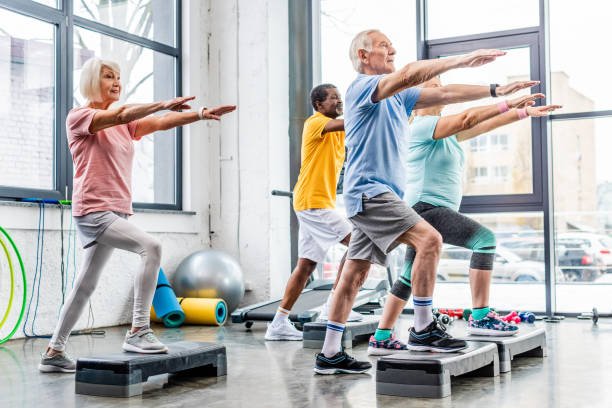
Is Exercise Effective For High Blood Pressure? What Exercises Can be Done to Lower Blood Pressure?
Regular exercise is one of the ways to reduce the risk of blood pressure. Whether you choose to go to the gym, jog or walk outdoors, you can even do gentle exercise at home to lay the foundation for your health. However, when you suffer from high blood pressure, the key to exercise is to persevere. As long as you set aside time to exercise regularly every day and continue to exercise for more than 2 months, your blood pressure can usually be significantly reduced, and all aspects of your physical condition and cardiovascular health can also be improved. Significant improvement.
In this article, we will explain why exercise can lower blood pressure, what types of exercise are suitable for patients with hypertension, and remind patients with hypertension what they should pay attention to when exercising.
Is exercise effective for patients with high blood pressure?
When patients with high blood pressure start exercising, it not only has a significant improvement effect on lowering blood pressure, but is also necessary. Regular exercise or physical exercise can train the heart’s strength, thereby helping the stronger heart pump to pump blood less effortlessly, while reducing the pressure on the arteries and away from the threat of high blood pressure.
According to American research, when patients with high blood pressure exercise for at least 30 minutes multiple times a week, their blood pressure can be lowered by 4 to 9 millimeters of mercury, which is healthier than drug treatment and thus reduces the patient’s dependence on high blood pressure drugs. , obviously the importance of exercise for patients with hypertension.
However, when patients with high blood pressure decide to exercise to control their blood pressure, they must persevere and exercise for at least 1 to 2 months before their blood pressure will improve.

4 guidelines for high blood pressure exercise
- Aerobic exercise improves high blood pressure
Research has found that aerobic exercise has the most significant effect on high blood pressure, such as brisk walking, jogging, mountain climbing, swimming, dancing, riding a bicycle, climbing stairs, etc. But this does not mean that other training is unnecessary; moderate weight training, such as about twice a week, can not only increase muscle mass, but also slow down the loss of muscle and bone density caused by age.
However, patients with high blood pressure should consult with their doctor about a suitable training method before engaging in weight training, so as to avoid accidents due to excessive increase in blood pressure in a short period of time due to increased weight. - Calculate heart rate control exercise intensity
Regarding exercise guidelines for patients with hypertension, the medical community generally recommends that patients should engage in moderate-intensity aerobic exercise to lower blood pressure. Although some studies have found that exercise intensity is directly proportional to the decrease in blood pressure, it can also increase the risk. Therefore, it is recommended that the patient’s heart rate during exercise should not exceed “maximum heart rate (220 – age) x 0.6~0.8”. Taking a 40-year-old hypertensive patient as an example, the heart rate during exercise should not exceed 144 at most.
If you feel that it is too troublesome to calculate, you might as well use the individual’s state of “feeling a little strenuous and unable to sing but still able to speak” as the standard for exercise intensity. - How long does exercise take?
Generally speaking, aerobic exercise for 30 minutes at least three times a week can effectively improve high blood pressure. If your doctor confirms that your personal status allows you to increase the amount of exercise, you may wish to increase the frequency of exercise to 5 or even 7 times a week to obtain more benefits from exercise.
However, for most office workers who only have fragmented time, it is recommended to change the 30 minutes of exercise time a day to at least 10 minutes each time and finish it in 3 times, which can also achieve the effect of exercise. - How to start exercising?
Hypertensive patients who do not usually have exercise habits are likely to face the challenge of giving up or continuing to exercise at the beginning. At this time, you should first choose your personal preference for exercise and persevere, and ask if there are friends around you who are willing to join the exercise ranks. Through establishing exercise habits with family and friends, start exercising for 15 minutes a day, choose a venue that you are familiar with, or choose a venue that you are familiar with. Climbing stairs and brisk walking are simple and convenient aerobic exercises to start.
Once your body has adapted, you can also try other aerobic exercises. This will make your body feel that exercise is a pleasure rather than a burden, and it will be easier to persevere.

6 things to note when exercising for high blood pressure
- Consult a doctor first: Since every patient with high blood pressure has a different physical condition, please remember to consult a doctor before formulating an exercise plan to avoid overloading yourself with exercise all at once, which may cause danger, especially for patients with high blood pressure whose systolic blood pressure is >180mmHg. , diastolic blood pressure >110mmHg, or patients with complications of hypertension must consult a physician before engaging in exercise.
- Don’t forget to warm up before exercising: Warming up can help your body warm up, activate your muscles and bones, and reduce the risk of sports injuries.
- Sweat-wicking and moisture-absorbent sportswear: Many people think that when exercising without equipment, there is no need to pay too much attention to clothing. However, choosing sportswear that is well-fitting and well-ventilated can not only help wick away sweat, but also avoid discomfort caused by excessive temperature that is difficult to discharge during exercise.
- Replenish water: Dehydration is one of the risk factors for high blood pressure. Don’t forget to prepare a water bottle and drink water before, during and after exercise.
- Pay close attention to your physical condition when exercising: having blood pressure problems can cause some physical limitations, so it’s important to ask your doctor for advice before trying any exercise. Always pay attention to the feedback your body gives you. Exercise may make you feel tired and have muscle soreness. This is normal. However, if you feel severe pain, difficulty breathing, chest pain or dizziness, you should stop exercising immediately and take a rest. See if these symptoms go away on their own, and if they don’t, seek medical attention as soon as possible.
- Pay attention to the ambient temperature: Patients with high blood pressure should avoid exercising in too hot or cold environments. If the weather is bad, it is recommended to choose indoors with air conditioning instead of outdoor exercise.













